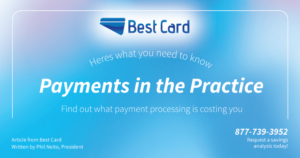Stop Getting Hired by Insurance Companies – How to Set Your Office Free from Insurance Verification

Today, it seems more than ever that there is a push for dental offices, previously tied to PPO insurance contracts, to move in a different direction.
This can be for a variety of reasons.
Maybe your provider is tired of working for half your fee, tired of the downgrades, or maybe your team is tired of calling insurance companies for hours every day.
Maybe your office is working on dropping several networks.
Or maybe, like us, you’re stuck somewhere in between all of the above.
Would you and your team like to free up several hours a day and stop getting worked over by “complementary benefit checks”?
I know what you’re thinking: “It sounds like a dream. There’s no way this could work in my office.”
But guess what?
Yes, it can! We did it, and you can too!
What’s Currently Happening with the Insurance Process?
As we know, trends in the insurance industry haven’t made insurance verification any easier lately—even with their “easy-to-use” self-service options.
Many of us are used to verifying eligibility and benefits at every visit. This takes up hours of our staff’s time. Perhaps you’re lucky enough to have outsourced your verification, but that certainly isn’t a cheap option either.
What We Noticed
Our office considered all these possibilities while also looking at trends in the medical industry.
The last time I saw my physician, they kept my card on file for any residual balances.
This got me thinking…Why is this such common practice in the medical industry but not in dentistry? Are our services not just as valuable?
Well, of course they are!
After talking with my team and having several strategizing sessions to get their input and suggestions for implementation, we decided to take pieces of everything we’ve seen and make them our own. We no longer spend hours verifying insurance benefits.
The Keys to Success with Insurance
Here are the steps we’ve taken to help set ourselves free and encourage our patients to be aware of their benefits.
1. Write a Letter
It all starts with a letter.
We require emails and phone numbers to be on file for every family in our practice. Four days before their appointments, our patients receive a text reminder telling them about their visit and to check their email for an important insurance reminder.
This is where we email them our “Insurance Reminder” letter.
The letter states all the basic things we like to tell our patients about their insurance. It advises that their insurance is an agreement between them and their employer or broker.
We will do our best to be sure the plan is active, but we are no longer doing complementary benefit checks.
We provide a list of our most common services and let them know that “in an attempt to eliminate any unforeseen out-of-pocket,” we encourage them to check the coverage amounts, percentages, and limitations to these procedures and let us know upon check-in if they wish to decline any services.
This happens at every visit. It takes our team seconds to send the message to everyone, versus sometimes 30+ minutes trying to obtain and interpret insurance benefits.
We do use an affordable software to verify eligibility; it inputs the eligibility report into our practice management system, eliminating our staff having to input anything else.
2. Ask for a Signature
This is where we took this policy change one step further.
Upon check-in, we ask patients if they’ve received the letter and ask them to sign a copy that we keep on file for the duration of their care with us. After reading the letter they know that we require a card to be left on file for any patient balances.
At the bottom of the letter, next to where they sign, it has them acknowledged that we will email one statement after insurance has paid their portion, and any amount remaining will be applied to the card on file unless they have called to discuss otherwise.
3. Collect at the Time of Service
What about collecting patient portions?
We do submit pre-authorizations for all recommended treatments and strive to be sure they are received back prior to their next appointment. We always collect at the time of service for any dental treatment beyond preventative.
Time and Team Invested in Shifting Financial Policy Changes
I will be honest with you—this change took a major commitment from our team to re-train our patients. It’s all about retraining their mindset after years of doing things differently.
This takes time; be patient. It will be worth it in the end!
It took us around nine months to see a full shift of accountability.
Our patients knew nothing about their insurance benefits even though they are their benefits. So we wanted to gently guide them into being responsible for their benefits, as opposed to all the responsibilities being placed on our team members.
Today, we are almost two years into this process, and our team has never been happier! They are not spending hours a day or week verifying downgrades, percentages and frequencies.
This was a huge shift from the patient-centered complementary benefits check we’d always used.
I cannot stress enough how successful this change was for us. We have five locations using this same system and very minimal pushback from our patient families.
Now is the Time for Change
The timing couldn’t be more perfect.
Post-covid, we felt like it was a great time for implementation as so many things that were “normal” have now changed into something that is a “new normal.”
How many signs do you see on a regular basis that say “due to staffing shortages” or “due to covid” we’re no longer offering “xyz”?
This is no different.
We can all relate to the constant staffing shortage over the last three years.
It’s the perfect time to say, “Due to Covid and/or staffing shortages, we’ve had to restructure our team’s duties, and we are no longer able to provide complementary benefit checks for each patient.”
Patients know and expect that some things in our offices have changed recently. Helping them be accountable for their coverage is just one of them.
A Changed for the Better
If your team is tired of being held hostage by insurance, I encourage you to take these steps to alleviate their stress and re-focus your team on other priorities. By creating communications and systems for your patients and guiding them through this re-training process, you can help them be accountable for their benefits.
You, too, can be set free! After all, it is their insurance!
If you’d like more information or examples of the letter that we use, please reach out to me at aadomdenver@gmail.com.
Take a FREE test drive of AADOM membership!
It includes:
- 1 webinar recording
- 1 issue of the Observer Magazine
- A complimentary Q&A session with an AADOM Success Strategist
- 1 practice management podcast
- Bonus ebook from an industry leader
What do you have to lose?







